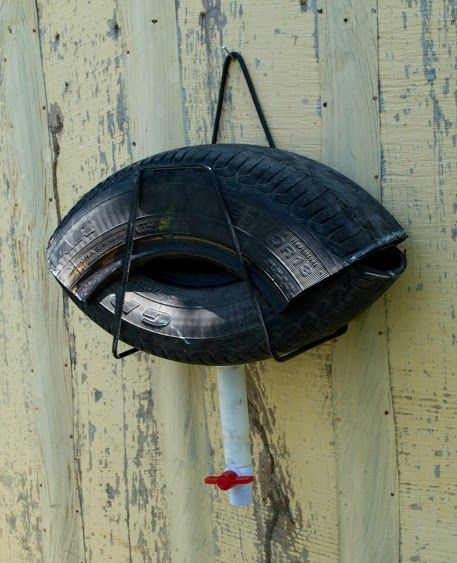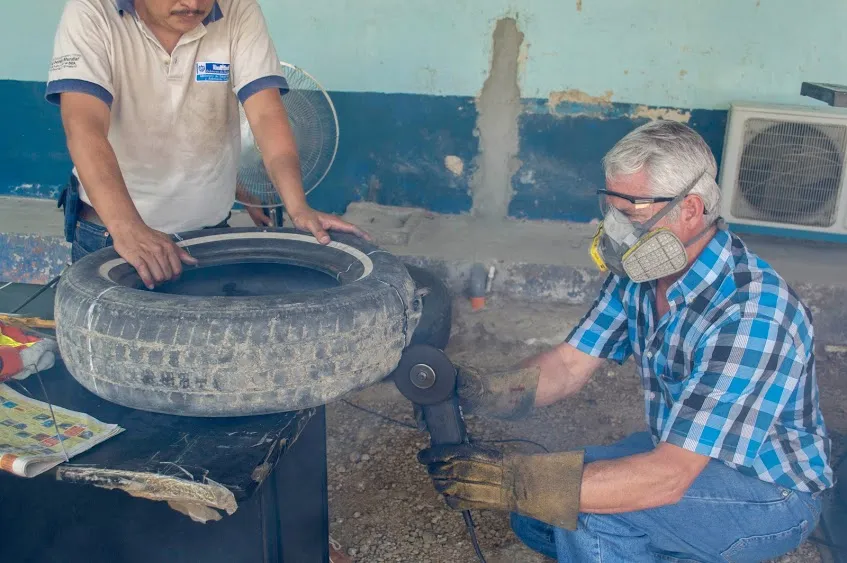How to Build a Mosquito Trap From an Old Tire
Canadian researchers hope to curb the spread of Zika and other mosquito-borne diseases by luring the pests into homemade traps
/https://tf-cmsv2-smithsonianmag-media.s3.amazonaws.com/filer/a9/f3/a9f328d5-bcf3-4fa9-8b52-588d870ad04e/old_tires_in_dump.jpg)
Mosquitoes love old tires. Scientists aren’t exactly sure why. There’s something about the warm rubber—a chemical compound that the mosquitoes can smell, perhaps—that attracts the insects to lay their eggs in the tires’ hollow insides. In backyard settings, old tires are one of the biggest risk factors for mosquito breeding, producing up to a third of all mosquitoes in the area.
Now, scientists are taking advantage of mosquitoes’ affection for tires to create a new kind of mosquito trap. These tire traps, which are easy to make and inexpensive, could prove key in stopping the spread of Zika and other mosquito-borne illnesses.
Gérard Ulíbarri, a chemistry professor at Laurentian University in Ontario, invented the traps almost by accident. Ulíbarri had previously worked on a project involving mosquito traps to combat West Nile virus, a mosquito-borne virus that had several outbreaks in the United States and Canada in the 2000s. Recently, he and his team received a grant from Grand Challenges Canada, a government agency that funds health research, to study whether the traps would work in Central America.
When the team set out to begin research in Guatemala, they found that the ovitraps (traps that destroy mosquito eggs) they’d used previously were not available.
“So we had started thinking, ‘what could we use?’" recalls Ulíbarri. “The tire came up, and we thought, ‘oh, let’s see if a piece of a tire can do the trick.’ Lo and behold, we hit the jackpot.”
Ulíbarri dubbed the tire traps “ovillantas,” combining ovi, meaning egg, with the Spanish word for tire, llanta. The ovillantas consist of a third of a tire fitted with a drainage valve. The tire piece is filled with water; pieces of paper to serve as “landing strips” float on top. The mosquitoes lay their eggs atop the water, which can then be drained once or twice a week. Rather than discarding the water, users are instructed to filter out the larvae using a clean piece of fabric. That way, the water retains a crucial pheromone that signals to other mosquitoes that this is a good place to lay eggs.

The team recently finished their one-year project in the Guatemalan town of Sayaxché. The results were very promising: the ovillantas destroyed seven times more mosquitoes than traditional traps, nearly 18,000 larvae per month. There were no new dengue cases in the area, where normally there would be two or three dozen.
Ulíbarri estimates that two ovillantas per acre is enough to cause a dent in a local mosquito population but “the more you have, the better it is.” Ideally, every house in a given city would have its own ovillanta in the backyard, he says.
The researchers hope to receive continued funding to expand their work in Guatemala. Ulíbarri would like to see traps across the entire northern part of Guatemala, forming a “cushion” to prevent diseases, such as Zika, dengue and chikungunya, from spreading north. Ulíbarri’s team is now launching an ovillanta project in Mexico. The Minister of Health from the city of Cali in Colombia, which has been hit by Zika, also recently visited Ulíbarri to see the ovillantas for himself.

Ulíbarri and his colleagues are working to distribute instructions on how to build ovillantas at home. The process requires a few basic power tools and some safety equipment. The chemist cautions that cutting tires can release dangerous fumes, so respiratory protection is necessary.
“If the government pitches in, I’m sure we can implement this very, very fast and be a preventive measure against the Zika virus spreading,” Ulíbarri says. “The Zika virus is not going to wait for us.”
/https://tf-cmsv2-smithsonianmag-media.s3.amazonaws.com/accounts/headshot/matchar.png)


/https://tf-cmsv2-smithsonianmag-media.s3.amazonaws.com/accounts/headshot/matchar.png)